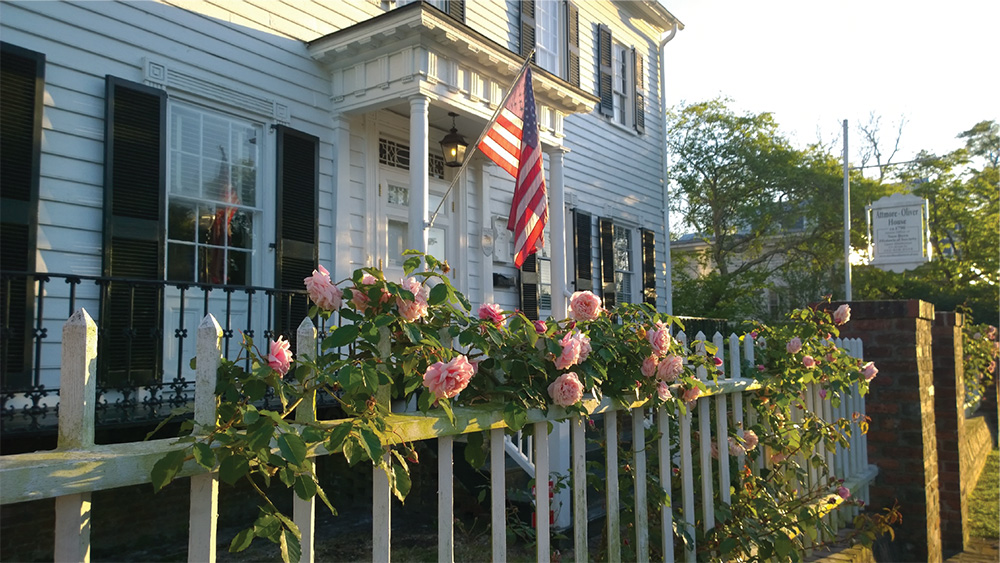Another New Bern History Mystery
by Claudia Houston, Historian, New Bern Historical Society
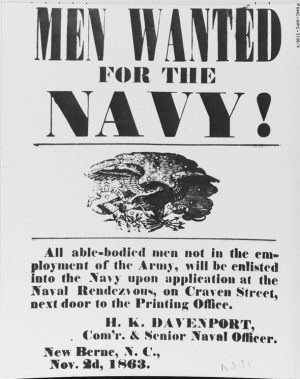
During the Civil War, women were not allowed to enlist in the military. In previous articles and Historical Society programs, we have told stories of women who have disguised themselves as men to accompany their husbands. This article, however, focuses on one woman from New Bern who, according to records, actually was allowed to enlist in the military during the Civil War and was not in disguise. Who is this woman and what is her story?
Lucy Berrington (also spelled Berington and Barrington), a forty-five-year-old Black woman, enlisted in 1864 in the US Navy during the Union Occupation of New Bern. She entered naval service as a “first class boy,” an entry level position at the wage of $9 per month and the lowest rating in the Navy, reserved for inexperienced young boys. Her gender was known at the time of enlistment, and she was assigned as a laundress to the U.S. Naval Hospital in New Bern. The Leech-Bryan House on the 400 block of East Front Street, which no longer exists, was the site of that Civil War naval hospital.
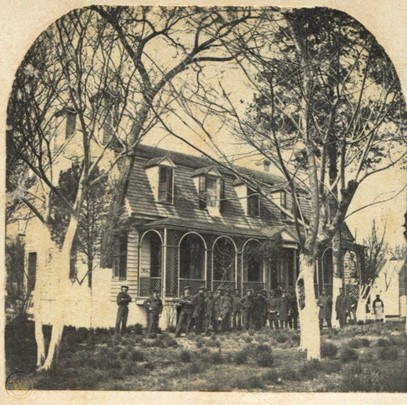
There were no free Black women with Lucy’s name listed in a census in North Carolina, nor could she be found in the 1860 Slave Schedules. We have no idea where she came from or resided, but we have a birth date of 1819.
The Military contracted with laundresses at the rate of fifty cents per day or fifteen dollars per month, nearly double the amount that Lucy was paid. They were not considered military personnel but rather independent contractors. Why did the Navy allow Lucy to enlist when they knew she was a woman, and why did Lucy enter military service when as a contract laundress she could have made nearly double her entry level position? Did the Naval Recruiter determine that it was cheaper to enlist her at a lower pay scale as “a boy” than to pay a higher rate as a contract laundress? Lucy could not negotiate for higher pay nor quit if there were a better paying job elsewhere. She was, however, guaranteed a job, a place to live, and a salary.
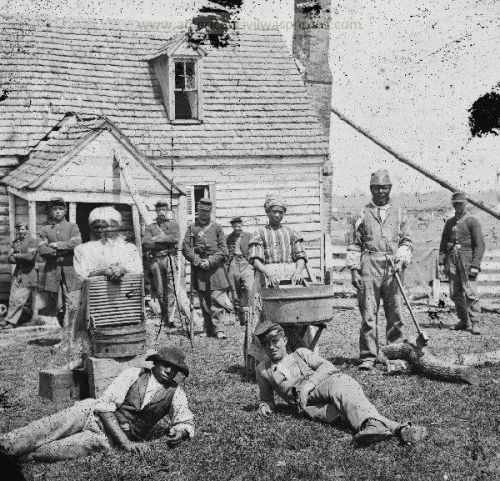
Being a hospital laundress was backbreaking work. During this time of rampant yellow fever and smallpox, Lucy would have been exposed to myriad diseases from changing and washing sheets, towels, and uniforms. Sadly, the records indicate that Lucy died in 1864 of smallpox after only a few months of service. We could locate no place of burial, although she should have been entitled to a military funeral and headstone. She may be buried somewhere as an “unknown.”
We do not know where Lucy came from, whether Lucy Berrington was her real name, whether she had family, whether she was enslaved, why she was allowed to enlist as a woman when it was forbidden, nor when and where she was buried. The scant information we do have is from the National Park Service database, Civil War Soldiers and Sailors System. This is a publicly available, searchable website that allows anyone to look up individuals who served during the United States Civil War. The National Park Service has partnered with Howard University to identify African American sailors who served in the Union Navy during the Civil War. The research has resulted in a database of approximately 18,000 African American sailors from various historical Navy documents. Lucy is noted on that database as follows:
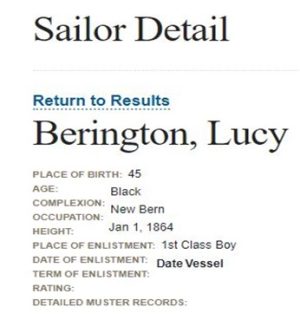
Despite a host of unanswered questions, there are official records that show that Lucy Berrington enlisted in the U.S. Navy and deserves recognition for her service and sacrifice during the Civil War.
You may check out the service of any soldier during the Civil War by checking this database: https://www.nps.gov/civilwar/soldiers-and-sailors-database.htm

